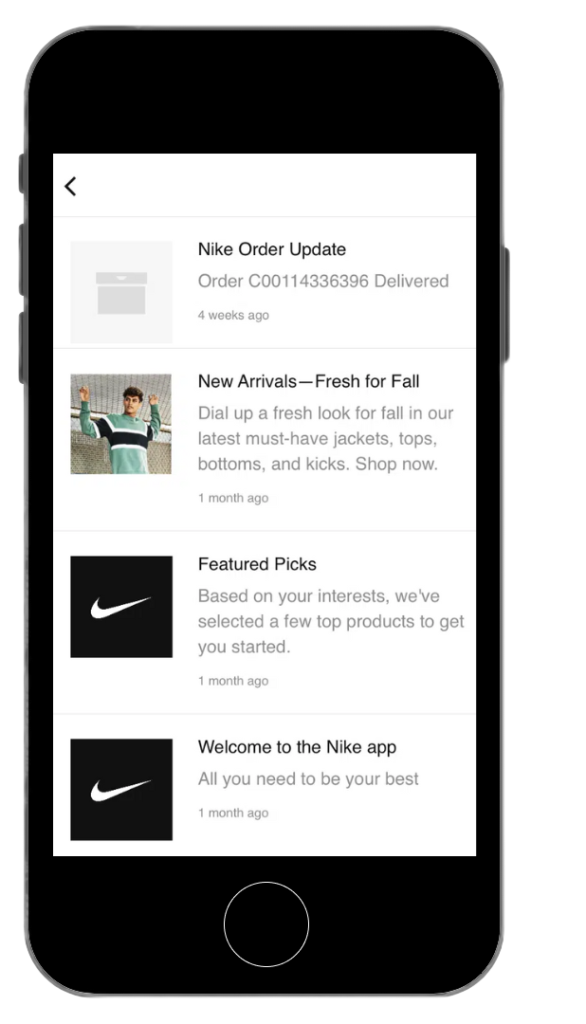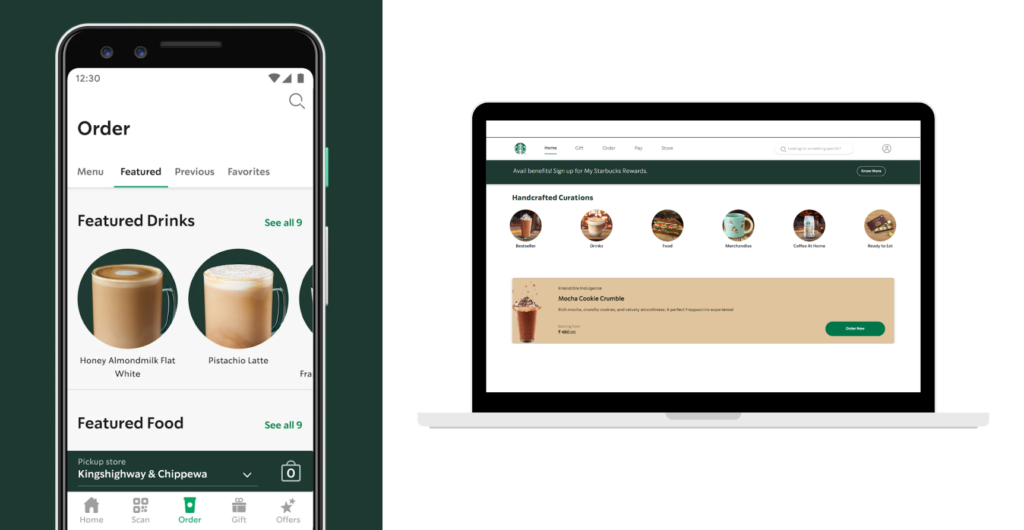How to Create a Seamless Omnichannel Experience for Retail Customers
The Importance of Seamless Omnichannel Retail in Today’s Competitive Landscape
In today’s highly competitive retail landscape, providing customers with a seamless omnichannel experience has become essential for success. With the convergence of online and offline channels, businesses must ensure a cohesive and integrated approach to engage customers across multiple touchpoints. In this blog, we’ll explore the importance of creating a seamless omnichannel experience and share practical strategies to achieve it.

Understanding the Omnichannel Approach:
The omnichannel approach focuses on delivering a consistent and unified customer experience across all channels, be it physical stores, websites, mobile apps, or social media platforms. By integrating these channels, retailers can offer customers a seamless journey from discovery to purchase, irrespective of the touchpoints they engage with. This approach eliminates silos and ensures that customers receive a consistent brand experience, fostering trust and loyalty.
Embracing Customer-Centricity:
To create a seamless omnichannel experience, retailers need to place their customers at the center of their strategies. By gaining a deep understanding of customer preferences, behaviors, and expectations, businesses can tailor their offerings and communication to meet individual needs. (Having access to abundant and reliable data is crucial to achieving this, as is described in a later section) This customer-centric approach ensures that each interaction, whether in-store or online, is personalized and relevant, enhancing the overall customer experience.
Sephora exemplifies customer-centricity by placing their customers at the center of their strategies. They gather customer preferences and behavior data through their mobile app, website, and in-store interactions. Sephora’s Beauty Insider loyalty program enables personalized offers and recommendations based on customers’ purchase history and preferences. Through data analysis and personalization techniques, Sephora tailors the customer experience, delivering relevant product recommendations, exclusive promotions, and personalized content. By embracing customer-centricity, Sephora creates a seamless omnichannel experience that meets individual needs and fosters customer loyalty.

Unified Inventory and Fulfillment:
One of the key challenges in achieving a seamless omnichannel experience is managing inventory and fulfillment across channels. Retailers need to ensure real-time inventory visibility and accuracy, enabling customers to check product availability and make informed purchasing decisions. Furthermore, offering flexible fulfillment options such as buy online, pick up in-store (BOPIS), or ship-from-store enhances convenience and speed, meeting customers’ expectations for a convenient and seamless shopping experience.
Integration of Data and Technology:
Data and technology form the foundation of a seamless omnichannel experience. Retailers must invest in robust data management systems and leverage cutting-edge technology solutions to enable effective integration across channels. Here’s a deeper dive into this crucial aspect:
Robust Data Management Systems:
To create a seamless omnichannel experience, retailers need to consolidate customer data from various touchpoints, including online and offline interactions. This requires implementing robust data management systems that can capture, analyze, and integrate data effectively. By centralizing customer data, retailers can gain a holistic view of each customer’s preferences and purchase history. This enables them to analyze customer behavior and deliver highly personalized experiences.
Retailers can utilize customer relationship management (CRM) systems to aggregate and analyze customer data. These systems allow businesses to track customer interactions, segment their audience, and provide tailored recommendations and offers. By leveraging CRM systems, retailers can gain valuable insights into customer preferences and behaviors, facilitating targeted marketing campaigns and personalized communication.
Personalization through Data Insights:
Integrated data from multiple channels provides retailers with actionable insights to deliver personalized experiences. By analyzing customer data, retailers can identify patterns, preferences, and trends. This information allows them to recommend relevant products, suggest complementary items, and deliver personalized offers and promotions.
For example, a retailer can use data to create personalized product recommendations on their website or app based on a customer’s browsing and purchase history. They can also send targeted emails or notifications to customers, showcasing products that align with their interests. Personalization creates a sense of individual attention, enhancing customer engagement and satisfaction.
Seamless Cross-Channel Experience:
Technology plays a crucial role in ensuring a seamless cross-channel experience for customers. Mobile apps, responsive websites, and social media platforms are key touchpoints that need to be integrated to provide a consistent brand experience. Retailers should optimize their online platforms for different devices, ensuring a smooth transition from desktop to mobile or tablet.
For instance, a customer may browse products on a retailer’s website using their desktop computer. They can then conveniently add items to their cart for a seamless shopping experience. Later, when they switch to their mobile device, the cart should seamlessly carry over, allowing them to continue the purchase without any disruptions. This synchronization requires effective integration of data and technology systems, enabling customers to pick up where they left off regardless of the channel they use.
Streamlined Operations and Inventory Management:
Integration of data and technology also streamlines operations and inventory management.Real-time inventory visibility across channels provides customers with the convenience of checking product availability. This applies whether they are planning to visit a physical store or make a purchase online. This prevents potential disappointments due to out-of-stock items and improves customer satisfaction.
Additionally, technology solutions such as RFID (Radio Frequency Identification) tags, barcode scanners, and automated inventory management systems enable retailers to accurately track and manage inventory levels. This ensures that product availability information is up to date across channels, preventing instances of overselling or inaccurate stock information.
Nike for instance offers a seamless omnichannel experience through its mobile app, website, and physical stores. Their app and website allow customers to browse and customize products, make purchases, and earn rewards through the NikePlus loyalty program.
By leveraging data insights, Nike delivers personalized content, training programs, and exclusive events through their app. This tailors the experience to meet the unique preferences and needs of individual customers.

By investing in data management systems and leveraging technology solutions, retailers can create a seamless omnichannel experience that delights customers. Integrated data enables personalization, streamlines operations, and ensures consistency across touchpoints, ultimately driving customer satisfaction, loyalty, and competitive advantage.
Consistent Branding and Messaging:
Maintaining consistent branding and messaging across channels is vital for creating a seamless omnichannel experience. Retailers should ensure that their brand identity, visuals, tone, and messaging remain consistent regardless of the channel. This consistency builds brand recognition and strengthens customer trust. Whether a customer is browsing a website, walking into a store, or interacting on social media, the brand’s voice and values should be consistently communicated.
For example, Starbucks maintains consistent branding in its mobile app, website, and physical stores. The iconic Starbucks logo, color scheme, and visual elements are present across all channels, creating brand recognition. The messaging and tone used in their marketing materials, social media posts, and customer communications align with their brand values, establishing a consistent brand voice.

Seamless Customer Service and Support:
Exceptional customer service is a cornerstone of a seamless omnichannel experience. Retailers should provide consistent and efficient customer service across all touchpoints. This includes offering multiple channels for customer support, such as phone, email, live chat, and social media. Implementing a robust customer service management system enables businesses to track and respond to customer inquiries promptly, ensuring a smooth and satisfactory experience throughout the customer journey.
Seamless Omnichannel Retail: The Key to Customer Satisfaction and Loyalty
Creating a seamless omnichannel experience is no longer a choice but a necessity for retailers. By understanding the omnichannel approach, embracing customer-centricity, unifying inventory and fulfillment, integrating data and technology, maintaining consistent branding, and providing exceptional customer service, businesses can achieve a cohesive and delightful customer experience across all channels. Investing in the right tools and strategies to create a seamless omnichannel experience will not only drive customer satisfaction and loyalty but also set businesses apart from the competition in today’s dynamic retail landscape.
